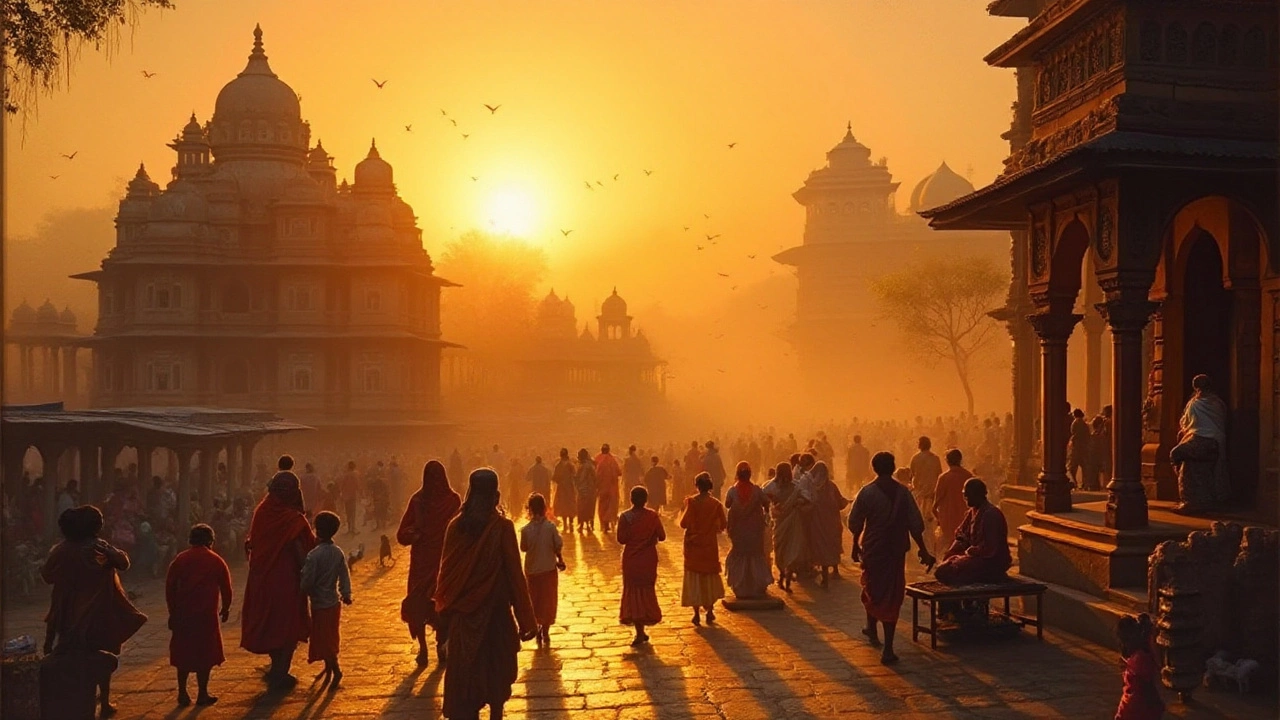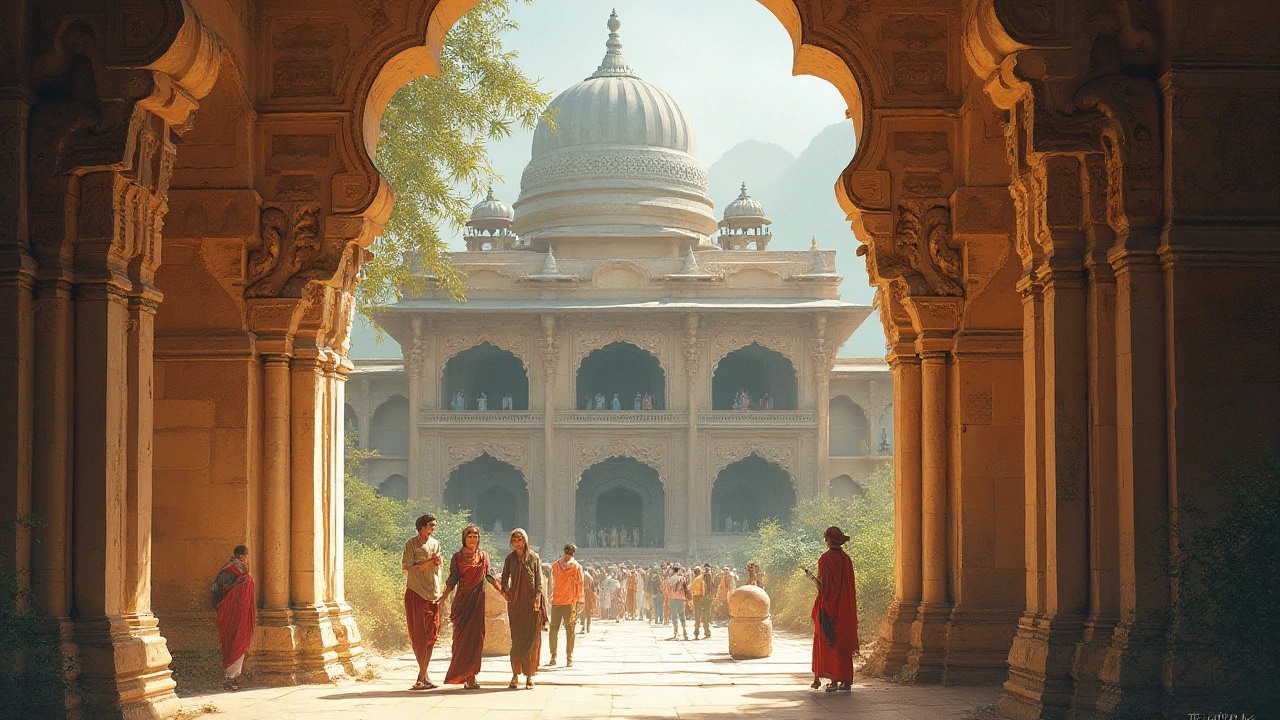Few countries boast as rich a tapestry of history and culture as India, where the past seems ever-present in the architecture and traditions that many continue to cherish today. This February, India celebrates another remarkable milestone with the inclusion of its latest site in the UNESCO World Heritage list. But what makes a heritage site worthy of such esteemed recognition? And what stories does this new addition tell?
Beyond the tangible marvels of grand buildings and intricate carvings, this newly recognized site offers an enchanting glimpse into India’s storied past, where dynasties rose and fell, cultures converged, and artisans left an indelible mark on history. As you step into this timeless space, the whispers of ancient travelers and craftsmen echo through the stones, inviting every visitor to embark on a journey beyond the ordinary.
- Historical Significance and Cultural Context
- Architectural Marvels and Unique Features
- Preservation Efforts and Global Recognition
- Visiting Tips and Practical Information
Historical Significance and Cultural Context
Few places capture the essence of a civilization quite like a UNESCO World Heritage Site, and India's newest listing does just that. A testament to the country's diverse heritage, this site offers a window into the era when emperors dreamed of architectural greatness and cultures mingled in harmony. Its significance lies not just in its age but in the myriad stories entwined with its existence, whispered through its walls and artefacts.
Dating back to the 17th century, this site served as a pivotal center of trade and culture, bustling with activity and beckoning people from various corners of the world. Located in a strategic position, it connected the East and West, serving as a vital artery for commerce and cultural exchange. The vestiges of this bustling epoch are visible today in the architectural forms that blend indigenous styles with foreign influences, mirroring the cosmopolitan spirit of its time.
The Cultural Tapestry
This site isn't just a collection of structures; it's a living testament to the syncretism of religious and cultural practices. Artists, musicians, and artisans from different regions coalesced here, leaving behind a mosaic of traditions and festivals that continue to thrive. Offerings at the temples, embers of ancient fire rituals, and the notes of traditional instruments played during local celebrations echo on, each telling tales of a vibrant past.
The Path to UNESCO Recognition
Recognizing its immense value, extensive efforts were undertaken to preserve its integrity. The community-driven preservation efforts and meticulous restorations aimed at maintaining its original charm while ensuring structural safety for future generations. The global acknowledgment of this site fosters a deeper appreciation and commitment to protecting other such invaluable heritages.
In a modern world that often races forward, this site urges us to pause and reflect on the legacies of our ancestors. It's a place where history isn't just remembered but felt, an enduring celebration of the human spirit's capability to thrive through ingenuity and unity.
Architectural Marvels and Unique Features
India's new UNESCO World Heritage Site stands as a testament to the country's unparalleled architectural heritage, offering visitors a vista of intricate design and historical innovation. This site, a confluence of different architectural styles, reflects the diverse cultural and artistic influences that have shaped India across centuries.
Cultural Confluence in Design
The architectural style of the site is a poignant blend of indigenous and international influences, a hallmark of India's historic embrace of varied cultures. The intricate carvings on the structures reveal the precision artisanship typical of the era, featuring motifs inspired by religious and cultural themes. These carvings not only adorn the walls but tell stories preserved in stone, offering visitors a narrative journey through time.
"The brilliance of this site's architecture lies in its ability to narrate the tales of its era through every stone and column," says Dr. Aamir Khan, a renowned historian and conservationist.
Structural Highlights
One of the most impressive features is a towering gateway, a feat of engineering that astoundingly remains intact. This gateway stands as a symbol of triumph and fortitude, crafted with striking attention to detail that continues to impress structural engineers and architects to this day. Equally mesmerizing are the expansive courtyards, designed with acoustics in mind, making them perfect stages for ancient performances that continue to inspire artists.
Iconic Elements
- The grand hall, with its vaulted ceilings and intricate frescoes, epitomizes the artistic zenith of the epoch.
- A network of subterranean passages, which adds an element of mystery and demonstrates advanced engineering.
- Elaborate altars, showcasing the site's spiritual significance and the diversity of the religious practices once held here.
Beyond aesthetics, the thoughtful layout and orientation of structures exhibit an understanding of both the environment and societal needs. The utilization of naturally occurring materials not only demonstrates sustainable practices but also enhances the durability and timeless appeal of the site.
Given these meticulously crafted architectural wonders, it's no surprise that this site resonates with both awe and reverence, drawing visitors from across the globe eager to witness a living piece of history. The care and craftsmanship embedded in these structures are a profound reminder of humanity's enduring creativity and capacity for cultural harmony.

Preservation Efforts and Global Recognition
The journey to achieving UNESCO World Heritage status is neither short nor simple. It involves rigorous evaluations and the fulfillment of numerous criteria. For India’s latest heritage marvel, this journey was marked by concerted preservation efforts and a clear appreciation of its historical importance. Over the years, a dedicated team of archaeologists, historians, and conservationists has worked tirelessly to ensure that the site was not only preserved but could also be accessed and valued by future generations.
A key aspect of the preservation strategy has been the careful documentation of the site's history, architecture, and cultural significance. This meticulous approach has involved extensive research, the consolidation of historical records, and the development of comprehensive conservation plans. These efforts ensure that the site's physical integrity and cultural narratives remain unharmed, thereby maintaining its authenticity and value on the global stage.
Community Involvement and Sustainable Practices
Importantly, the local community has played a vital role in preserving this UNESCO treasure. Initiatives designed to engage and empower community members have led to sustainable conservation practices. Traditional art and craft techniques have been revived and utilized in restoration projects, offering employment opportunities and fostering a sense of ownership among local residents.
Such grassroots-level involvement ensures that the heritage site is not merely a relic of the past but a living entity that continues to enrich present and future generations. By including local traditions and wisdom in the preservation process, the efforts have become more sustainable and culturally sensitive.
Global Recognition: A Testament to India's Heritage
The recognition by UNESCO is a testament to the site's outstanding universal value and the effectiveness of the preservation efforts undertaken. This status not only brings global attention but also funds and expertise that can be leveraged for further conservation and scholarly research. As part of its commitment to heritage sites, UNESCO works closely with countries to enhance capabilities and promote cultural exchanges, to ensure these significant sites reach their full potential.
For tourists and history enthusiasts, the designation means enhanced facilities and information resources that make exploring these wonderous locales more accessible and enriching. Yet, the true value lies in the awareness and responsibility that this recognition inspires globally; reminding everyone that the past is not a distant narrative but a key part of our shared human story.
Visiting Tips and Practical Information
Planning your journey to India’s latest UNESCO World Heritage site can be a thrilling endeavor, laden with the promise of historical discovery and cultural immersion. Here, we provide all the practical details to ensure your visit is as smooth and rewarding as possible.
Best Time to Visit
The optimal time to visit varies depending not only on the climate but also on the events or festivals that might heighten your experience. The months from October to March offer a mild and pleasant weather, perfect for exploring the site at your leisure. Be sure to check local festival calendars as certain events can provide a richer cultural context to your visit.
Getting There
Accessibility to the site is generally excellent, with well-maintained roads leading from major cities. A nearest airport and railway station are located within a two-hour drive, facilitating convenient travel either by rental car or local taxi. An insider tip: hiring a local guide can greatly enhance your trip, providing insightful stories and unique perspectives that are not found in guidebooks.
Entrance and Ticket Information
Tickets are required for entrance, with discounts often available for students and senior citizens. Consider purchasing tickets online to avoid long queues, especially during peak visiting hours. Guided tours are available hourly, and they typically last around 90 minutes, offering an in-depth look into the heritage site.
Accommodation Options
The surrounding towns offer a range of accommodation options to suit every budget, from quaint guesthouses to luxurious hotels that exude historic charm. Some of these establishments often partner with the heritage site to offer special 'stay and visit' packages that include guided tours. Booking in advance can save you a fair bit of hassle and money.
What to Bring
A comfortable pair of walking shoes is essential to navigate the expansive grounds with ease. Sunscreen and a hat are your best companions during sunny days, while a small bag to hold water and snacks ensures you're all set for the day's adventure.
Did you know?
| Fact | Details |
|---|---|
| Annual Visitors | Over 1 million |
| Travel Distance from Delhi | Approximately 250 km |
Remember, while photographs capture moments, the act of being present and absorbing the atmosphere cannot be replaced. Keep your itinerary flexible to accommodate the unexpected joys of discovery that this world heritage marvel has to offer.
